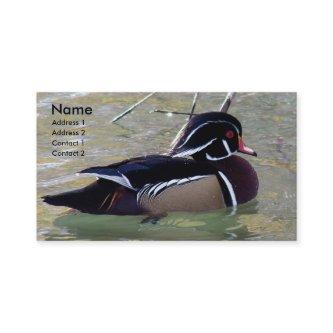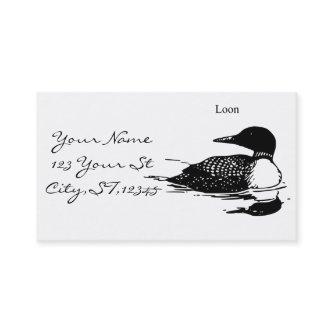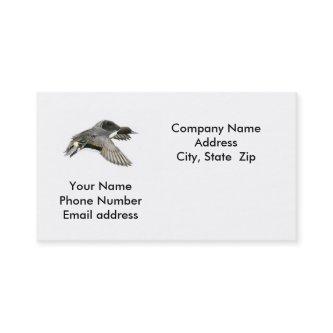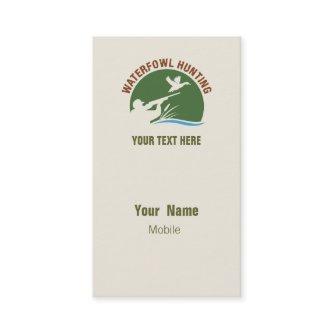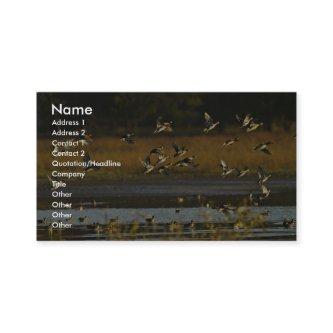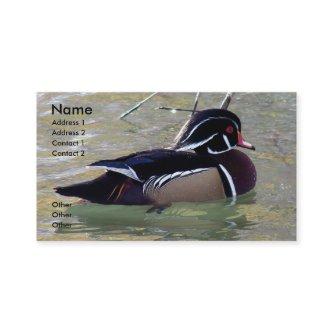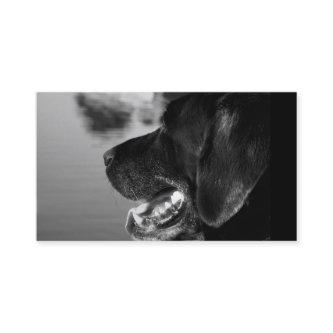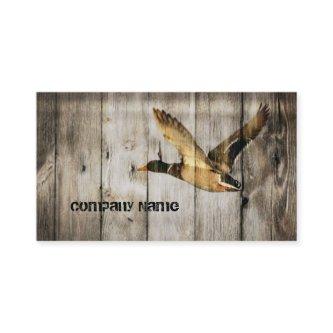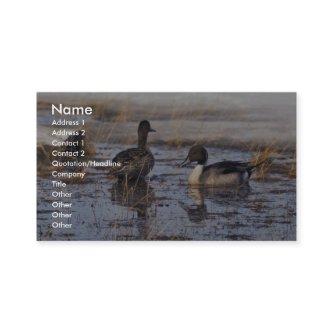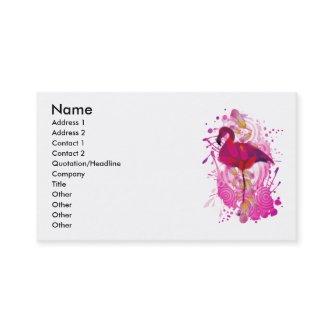Starting at $1.25 Additional discounts are available.
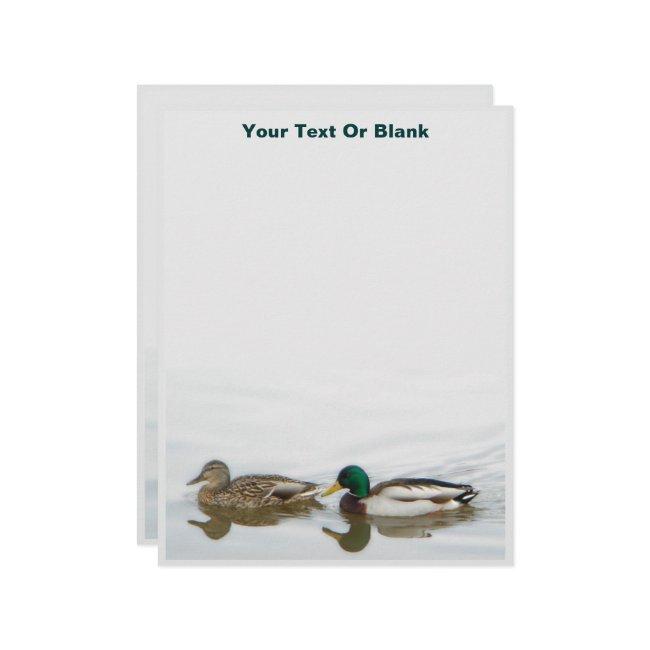 $1.25
$1.25
Further Discounts
Great news, this Mallards Letterhead is eligible for further discounts. Everyone loves saving money and with these discounts you can!
| Quantity | Discount | New Price |
|---|---|---|
| Discount prices reflect business cards sold in packs of 100. | ||
Product Description
We know that business cards come in all shapes and sizes. And when you browse through the assortment of styles and templates that you find on Card Bee this will become apparent. Because the size that is perfect for one industry or profession might not fit as well in another. That is the reason we offer cards in the following sizes:
| Type | Size |
|---|---|
| Standard | 3.5″ x 2.0″ |
| Mini | 3.0″ x 1.0″ |
| Mighty | 3.5″ x 2.5″ |
| Square | 2.5″ x 2.5″ |
| European | 3.346″ x 2.165″ |
| Oceania | 3.54″ x 2.165″ |
Format is another important aspect in getting the business cards you want. That is why you can choose from square or rounded corners. This simple detail can make a big difference in the way that your card is perceived. But that is not the only reason why Card Bee offers some of the easiest business cards templates all ready for you to start customizing now.
High-Quality & Professionally Printed
What makes these cards high-quality? No matter where you order, when it comes to business cards there are two things that need to be kept in mind.
Here’s My Card
- Paper
- See the Full List of Paper Types
- The paper is made in the US just like your business cards
- Print
- Printed on both sides
- True full color, printed in CMYK
Now even photo business cards come to life
When it comes to paper you will be pleased to know that these business cards are printed on thick premium paper. The benefit of this paper is that it has an almost eggshell like texture that is easy to write on, allowing you to personalize cards with additional information without fear of the ink smudging. This elegant and understated paper option allows the colors to print softer and more subtle. Giving even the most vibrant colors an elegant accent.
Here is what the designer has to say about this Mallards Letterhead:
Professionally designed with you in mind. These Mallards Letterhead offer a balance of memorability and professionalism that helps elevate your marketing to the next level. Two Mallard ducks, a drake and a female, swim together in an Alaskan pond. Customize by adding your own text. The Mallard, Anas platyrhynchos, breeds throughout the temperate and subtropical Americas, Europe, Asia, and North Africa, and has been introduced to New Zealand and Australia. Male birds have a bright green or blue head, while the female’s is light brown. The gregarious Mallard lives in wetlands and eats water plants. The Mallard is the ancestor of most domestic ducks. The Mallard was one of the many bird species originally described by Linnaeus in his th century work, Systema Naturae, and still bears the first binomial name it was given. The name is derived from the Old French malart or mallart “wild drake”, although its ultimate derivation is unclear. It may be related to an Old High German masculine proper name Madelhart, clues lying in the alternate English forms “maudelard” or “mawdelard.” Mallards frequently interbreed with their closest relatives in the genus Anas, such as the American Black Duck, and also with species more distantly related, for example the Northern Pintail, leading to various hybrids that may be fully fertile. This is quite unusual, and indicates that the Mallard evolved very rapidly during the Late Pleistocene. Mallards appear to be closer to their Indo-Pacific relatives than to their American ones judging from biogeography. Considering mtDNA D-loop sequence data, they may have evolved more probably than not in the general area of Siberia; Mallard bones rather abruptly appear in food remains of ancient humans and other deposits of fossil bones in Europe, without a good candidate for a local predecessor large ice age paleosubspecies which made up at least the European and west Asian populations during the Pleistocene has been named Anas platyrhynchos palaeoboschas. The Mallard is – inches long (of which the body makes up around two-thirds), has a wingspan of – inches, and weighs – lbs. The size of the Mallard varies clinally, and birds from Greenland, although larger than birds further south, have smaller bills and are stockier. It is sometimes separated as subspecies, the Greenland Mallard (A. p. conboschas).The Mallard is a rare example of both Allen’s Rule and Bergmann’s Rule in birds. Bergmann’s Rule, which states that polar forms tend to be larger than related ones from warmer climates, has numerous examples in birds. Allen’s Rule says that appendages like ears tend to be smaller in polar forms to minimize heat loss, and larger in tropical and desert equivalents to facilitate heat diffusion, and that the polar taxa are stockier overall. Examples of this rule in birds are rare, as they lack external ears. However, the bill of ducks is very well supplied with blood vessels and is vulnerable to cold. Breeding males are unmistakable, with a bright bottle-green heads, a black rear end and a yellowish orange (can also contain some red) bill tipped with black (as opposed to the black/orange bill in females). They have a white collar which demarcates the head from the purple-tinged brown breast, grey brown wings, and a pale grey belly. The dark tail has white borders. The female Mallard is a mottled light brown, like most female dabbling ducks, and has buff cheeks, eyebrow, throat and neck with a darker crown and eye-stripe. Upon hatching, the plumage coloring of the duckling is yellow on the underside and face (with streaks by the eyes) and black on the backside (with some yellow spots) all the way to the top and back of the head. Its legs and bill are also black. As it nears a month in age, the duckling’s plumage will start becoming drab, looking more like the female (though its plumage is more streaked) and its legs will lose their dark grey coloring. Two months after hatching, the fledgling period has ended and the duckling is now a juvenile. Between three to four months of age, the juvenile can finally begin flying as its wings are fully developed for flight (which can be confirmed by the sight of purple speculum feathers). Its bill will soon lose its dark grey coloring and whether it is male or female can finally be distinguished by three factors. The bill coloring is yellow in males, black and orange for females. The breast feathers are reddish-brown for males, brown for females. The center tail feather of male birds (called a drake feather) is curved; females have straight feathers. During the final period of maturity leading up to adulthood (6– months of age), the plumage of female juveniles remains the same while the plumage of male juveniles slowly changes to its recognizable colors. This plumage change also applies to adult Mallard males when they transition in and out of their non-breeding (eclipse) plumage at the beginning and the end of the summer moulting period. The adulthood age for Mallards is months and the average life expectancy is years. A noisy species, the male has a nasal call, and a high-pitched whistle, while the female has a deeper quack stereotypically associated with ducks. The Mallard is widely distributed across the Northern Hemisphere, North America from southern and central Alaska to Mexico, the Hawaiian Islands, and across Eurasia, from Iceland and southern Greenland and parts of Morocco (North Africa) in the west, Scandinavia to the north, and to Siberia, Japan, and China in the east. It is strongly migratory in the northern parts of its breeding range, and winters farther south. For example, in North America it winters south to Mexico, but also regularly strays into Central America and the Caribbean between September and May. The Mallard inhabits a wide range of habitat and climates, from Arctic Tundra to subtropical regions. It is found in both fresh- and salt water wetlands, including parks, small ponds, rivers, lakes and estuaries, as well as shallow inlets and open sea within sight of the coastline. They are attracted to bodies of water with aquatic vegetation. The Mallard is omnivorous and very flexible in its foods choice. Its diet may vary based on several factors, including the stage of the breeding cycle, short term variations in available food, nutrient availability, and inter- and intraspecific competition. The majority of the Mallard’s diet seems to be made up of gastropods, invertebrates (including beetles, flies, lepidopterans, dragonflies, and caddisflies), crustaceans, worms, many varieties of seeds and plant matter, and roots and tubers. It usually feeds by dabbling for plant food or grazing; there are reports of it eating frogs. It usually nests on a river bank, but not always near water. It is highly gregarious outside of the breeding season and forms large flocks, which are known as a sord. Mallards usually form pairs (in October and November) only until the female lays eggs at the start of nesting season which is around the beginning of spring (early March to late May), at which time she is left by the male who joins up with other males to await the moulting period which begins in June. Unlike many waterfowl, Mallards have benefited from human alterations to the world. They are very adaptable, being able to live and even thrive in urban areas which may have supported more localized, sensitive species of waterfowl before development. The release of feral Mallards in areas where they are not native sometimes creates problems through interbreeding with indigenous waterfowl. These non-migratory Mallards interbreed with indigenous wild ducks from local populations of closely related species through genetic pollution by producing fertile offspring. Complete hybridization of various species of wild ducks gene pools could result in the extinction of many indigenous waterfowl. The wild Mallard itself is the ancestor of most domestic ducks and its naturally evolved wild gene pool gets genetically polluted in turn by the domesticated and feral populations. By purchasing two or more sets you can reduce marketing expenses while getting the high-quality cards that you really wanted.
Products Related to this Design
Are these business cards close but lacking that special something that you are looking for for your company’s image? Then maybe you will find what you are looking for in one of these related categories. Each category offers you an opportunity to explore the catalog offered on card-bee.com. When you find the right design you can begin editing it by clicking the “Edit this Design” button.
How-To Edit Your Business Cards
The editing process couldn’t be any easier. Once you have found the card template that you want simply click on the “Edit this Design” button to begin. You will be taken to the editor. There you will be able to customize all of the aspect listed above. You can choose the size, format, and add all of your information through the easy to use interface. Any changes that you make during the editing will be reflected in the design while you work. Once you have finalized all of the details you can place your order. Printing usually completed within 24 hours. You have 30 days to return your order if you are dissatisfied with it for whatever reason.
Professionally printed custom business cards have never been easier.
- Choose a template to customize.
- Select your size, paper, and format options.
- Add any details you want to your card. Even add QR codes.
Then place your order.
Paper Types
Here is a list of available paper types.
- Standard Matte
- Standard Semi-Gloss
- Signature UV Gloss
- Signature UV Matte
- Signature Cream
- Premium Silk
- Premium Linen
- Premium Pearl
- Premium Kraft
- Premium Grey
- Premium Black
- Premium Thick
Prices and discounts may be changed at any time without further notice. Prices are set by third parties and are not connected to card-bee.com in any way whatsoever. Card Bee cannot be held responsible for the appearance of any inaccurate information contained in or linked from these web pages. In association with Zazzle.
